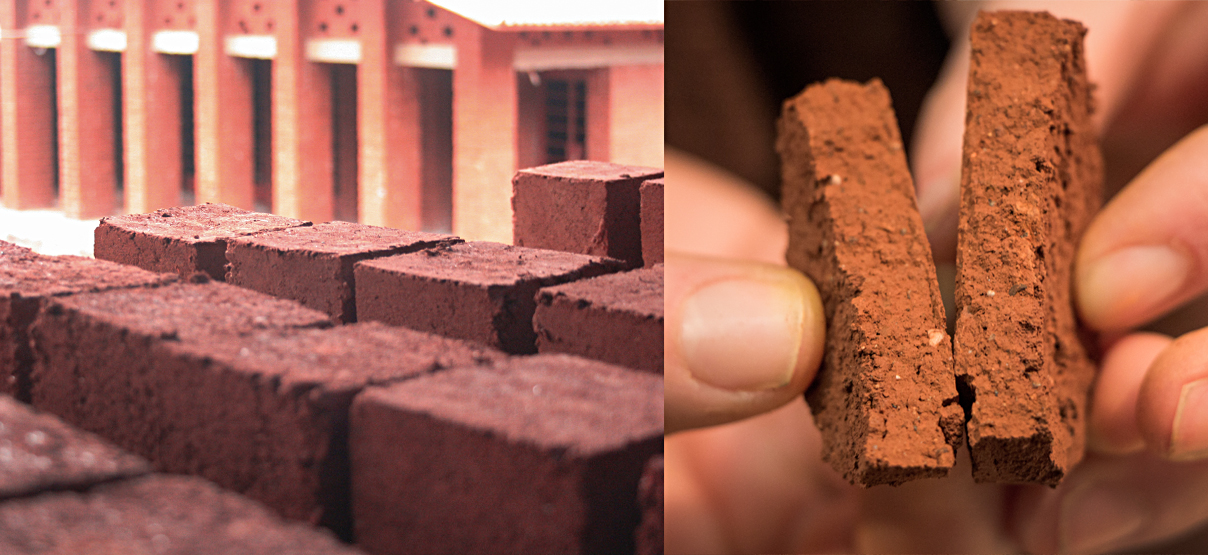The clay bricks may be naturally dried in the sun or baked in a kiln that makes them much stronger.
All bricks are made from clay in which other materials are added to give desired properties such as colour, chemical resistance, strength, or durability.
Here we will learn about clay bricks, types of clay brick, clay bricks advantages and disadvantages.
Introduction to clay bricks:
The burnt clay bricks are made by pressing into moulds, then these bricks are dried in kilns and removed.
Some bricks are made of metal-containing clay, baked at extremely high temperatures making them a ceramic material that is extremely strong and heat resistant.
When these bricks are used in walls, they require plastering or rendering and used in general work, with no special attractive appearance.
Clay bricks properties:
Resource Management: Brick manufacturing facilities are generally located near their source of raw materials.
Sound and insulation: The characteristic thickness and density of the mud-brick wall reduces noise transmission and prevents noise from outside for a peaceful and quiet home.
Durable: Clay bricks do not warp, rust, wear, peel, or fade over time, they do not harbor termites and appear more beautiful when they are manufactured.
Low Maintenance cost: While these bricks may be expensive to acquire, their low maintenance and durability make these materials a cost-effective option for the exterior of your home.
High resale value: Clay brick homes generally have a high resale value as homebuyers prefer the upscale appearance and easy care of a brick home.
Fire resistances: These bricks do not burn and reduce the possibility of fire where they are used.
Types of Clay bricks:
1.First Class Bricks (Grade A):
First-class bricks are fine-looking, well-burnt in kilns, table-moulded, rectangular with sharp edges.
Its surface is clean, smooth and has no cracks, these bricks are very hard bricks.
First-class bricks are mostly used for face work structure or superior work.
2.Second Class Bricks (Grade B):
Second class bricks are burnt in clamps and ground-moulds but with a slight irregularity in shape.
Its surface is rough and has spots, these bricks are tough.
These bricks are used in ordinary structures and places where the brick coat provided with a plaster coat.
3.Third Class Bricks (Grade C):
The third class clay bricks are moulded to the ground and burnt in a clamp.
Its surface is rough and has distorted edges, these bricks are slightly soft.
These bricks are used in irrelevant and temporary structures, especially places where rainfall is not heavy.
4.Fourth Class Bricks (Grade D):
Fourth class bricks are over burnt bricks.
Its surface is irregular and its colour is dark, these bricks are very hard.
These bricks are used in foundations, floors, roads, etc.

Clay bricks advantages and disadvantages:
Merits:
- Clay brick is weakly acidic at high temperature, corrosion resistance of alkaline lava is slightly weaker.
- Higher thermal stability than refractory brick or magnesia brick.
- This dry masonry vacuum impregnation process of the soil of acceptable quality can be used for low-temperature firing of phosphoric acid secondary products.
- This masonry lining blast furnace body part after phosphoric acid is destroyed.
- Brick is inexpensive, durable, as well as fire protection, thermal insulation, sound insulation, moisture absorption, etc.
Demerits:
- The clay brick masonry wall material is relatively large so the structure has to withstand more weight, which increases construction costs.
- Large-scale environmental damage, mainly soil excavation, therefore, damages the soil and vegetation, results in soil erosion.
Also read: Fly ash Bricks & Calcium silicate bricks
Conclusion:
Clay bricks are essential but different in physical appearance.
In many cases, they may be compatible provides the climatic conditions permit the use of unfiltered soil.

Related Posts
Rock Quality Designation(RQD): Building Strong Foundations
Spread Footing
Masonry Cement
Plain Cement Concrete
Concrete Efflorescence
Concrete Pile
Stepped Footing
Fineness Modulus of Coarse Aggregates
Difference between Condo and Apartment